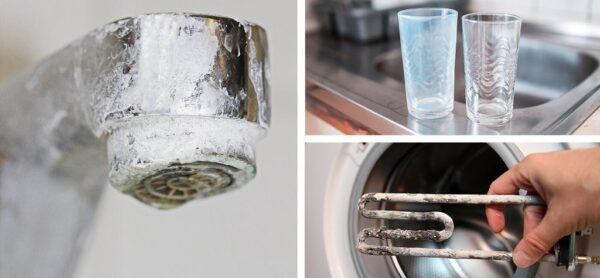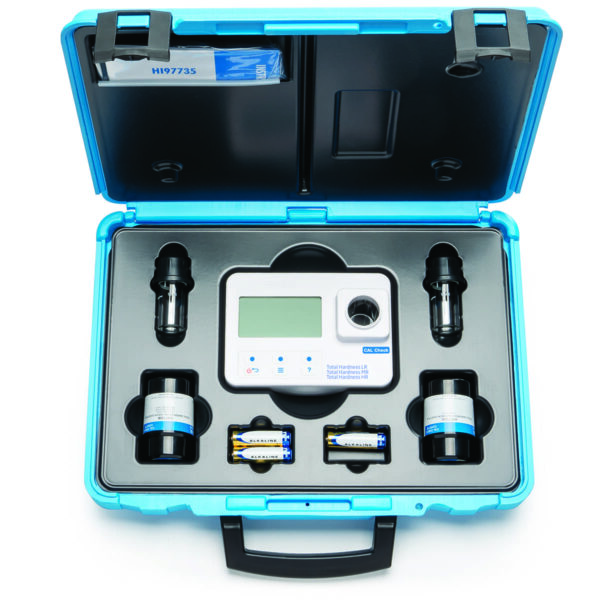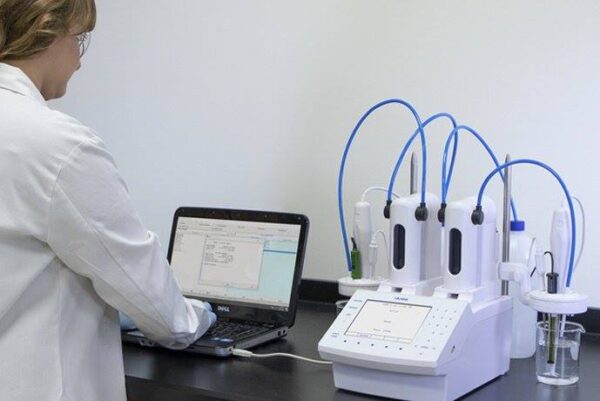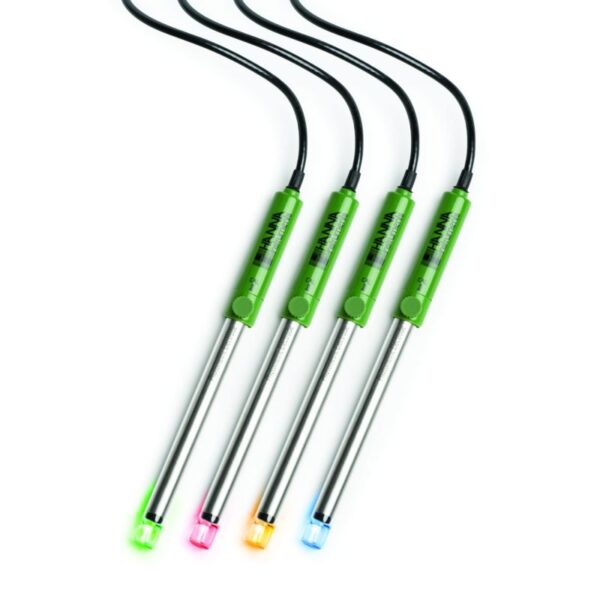Water hardness is one of the most common & one of the most significant pointers of general water quality.
It should be commonly monitored in various applications to avoid costly breakdowns in boilers, cooling towers, swimming pools, and other equipment that handles water.
In domestic settings, hard water is often indicated by a lack of foam formation when soap is agitated in water, and by the formation of limescale in kettles and water heaters.
Wherever water hardness is a concern, water softening is commonly used to reduce hard water’s adverse effects.
Hard water is water that has high mineral content (in contrast with “soft water”). Hard water is formed when water percolates through deposits of limestone, chalk or gypsum which are largely made up of calcium and magnesium carbonates, bicarbonates and sulfates.
Hard water also forms deposits that clog plumbing. These deposits, called “scale”, are composed mainly of calcium carbonate (CaCO3), magnesium hydroxide (Mg(OH)2), and calcium sulfate (CaSO4).Calcium and magnesium carbonates tend to be deposited as off-white solids on the inside surfaces of pipes and heat exchangers. The resulting build-up of scale restricts the flow of water in pipes. In boilers, the deposits impair the flow of heat into water, reducing the heating efficiency and allowing the metal boiler components to overheat. In a pressurized system, this overheating can lead to failure of the boiler.

In the following equilibrium reaction we can observe the dissolving and formation of calcium carbonate and calcium bicarbonate (on the right):
CaCO3 (s) + CO2 (aq) + H2O (l) ⇌ Ca2+ (aq) + 2 HCO−3 (aq)
Ions causing permanent hardness of water can be removed using a water softener, or ion-exchange column.
|
Classification |
hardness in mg-CaCO3/L |
hardness in mmol/L |
hardness in dGH/°dH |
hardness in ppm |
|
Soft |
0–60 |
0–0.60 |
0–3.37 |
0–60 |
|
Moderately hard |
61–120 |
0.61–1.20 |
3.38–6.74 |
61–120 |
|
Hard |
121–180 |
1.21–1.80 |
6.75–10.11 |
121–180 |
|
Very hard |
≥ 181 |
≥ 1.81 |
≥ 10.12 |
≥ 181 |
Kako izmeriti trdoto vode?
There are several methods available, from fast checking test kits, photometers to titration systems.
Total Hardness Portable Photometer – HI97735
The HI97735 Total Hardness Photometer combines accuracy and ease of use in a simple, portable design. The advanced optical system provides lab-quality accuracy while its user-friendly design is easy for any user making it the perfect photometer for your water quality testing needs. The HI97735 meter measures total hardness in water samples up to 750 mg/L (ppm) CaCO3.
- No warm up time needed before taking a measurement.
- Tutorial mode for easy step-by-step instructions.
- CAL Check for performance verification and calibration
- Easy navigation between chemical forms with a press-of- a-button:
- mg/L (ppm)
- French degrees (°f)
- German degrees (°dH)
- English degrees (°E)

It’s available in 2 versions HI97735 & HI97735C

Each HI97735 is delivered in a cardboard box and is supplied with:
- Sample cuvette (2 pcs.)
- Sample cuvette cap (2 pcs.)
- Plastic stopper (2 pcs.)
- 1.5V AA Alkaline batteries
- Instruction manual
- Meter quality certificate
Each HI97735C is delivered in a rugged carrying case and is supplied with:
- Sample cuvette (2 pcs.)
- Sample cuvette cap (2 pcs.)
- Plastic stopper (2 pcs.)
- HI97735A – CAL CheckCuvette A
- HI97735B – CAL Check Cuvette B
for Total Hardness LR, MR, HR
- Cloth for wiping cuvettes
- Scissors
- 1.5V AA Alkaline batteries
- Instruction manual
- Meter quality certificate
- CAL Check standard certificate

Reagents&ranges guidelines:
HI93735-00 (100 tests) LR – low range – 0 do 250 mg/L (ppm) CaCO₃; 0-14dH
HI93735-01 (100 tests) MR – middle range – 200 do 500 mg/L (ppm) CaCO₃; 11-28dH
HI93735-02 (100 tests) HR – high range – 400 do 750 mg/L (ppm) CaCO₃; 22-42 dH
*also available as full set HI97735-0 (LR+MR+HR)
TITRATION SYSTEMS ROLE IN WATER HARDNESS DETERMINATION

Titration is the gold standard when measuring water hardness, where calcium and magnesium form complexes with the titrant, EDTA. When performing this titration with an automatic potentiometric titrator, there are two different means of monitoring this reaction:
(1) with a calcium ion-selective electrode (ISE) HI4104
(2) a photometric electrode.
The use of one versus the other is based on overall measurement objective and user preference, with both methods having pros and cons. We will detail the differences between the two procedures below in order to assist you in determining which method is more appropriate for your application.
| Pros and cons of hardness determination with an ISE and photometric electrode. | ||
| Pros | Calcium ISE | Photometric Electrode |
| Determine calcium and magnesium in one titration (one sample). | Minimal electrode maintenance required. | |
| Minimal changes to manual titration procedure. | ||
| Cons | Significantly more electrode maintenance required. | Requires two separate titrations (two samples) to determine calcium and magnesium hardness. |
| Higher startup and recurring costs (ISE, modules, and required chemicals). | ||
Calcium ISE Method HI4104
In the presence of TRIS buffer, the calcium ISE can be used to detect both calcium and magnesium in one titration, where each ion is differentiated and displayed as their own specific equivalence point. Upon completion of the titration, results are automatically calculated for total hardness, calcium hardness, and magnesium hardness. This allows for one sample to be used for all three analytes, benefiting users who have a high throughput of samples. However, this method requires slightly higher startup and recurring costs for necessary materials and consumables. Furthermore, the ISE requires more time for electrode preparation and maintenance, rendering a steeper learning curve for those unfamiliar with ion-selective electrodes.
Photometric Electrode Method HI90060x

As dictated by Standard Methods for the Examination of Water and Wastewater[4], total hardness and calcium hardness can be determined with a color indicator, where magnesium hardness is calculated by deduction as seen in (1):
Magnesium hardness = Total hardness (Titration #1) – Calcium hardness (Titration #2) (1)
In the presence of an indicating dye, the testing solution will change color, signaling the end of the titration. Indicating dyes are used when manually titrating for hardness and can also be used in automatic titration with use of a photometric electrode. Where manual titrations are often affected by human error (due to subjective determination of the color end point), automatic titrations omit this subjectivity by use of an electrode to detect the color change.
With the release of Hanna Instruments’ application-based photometric electrodes, this alternative detection of color indicators is now more accessible and affordable than ever. By creating four different photometric electrodes at varying wavelengths, Hanna Instruments has significantly reduced the cost of photometric determination, Photometric electrodes require minimal maintenance and significantly lower recurring costs where, for customers currently testing via manual titration, current procedures and chemicals can be seamlessly transferred to automation.
References:
- “Hard water”. National Groundwater Association.
- https://www.who.int/water_sanitation_health/dwq/chemicals/hardness.pdf
- http://www.chem1.com/CQ/hardwater.html
- Standard Methods for the Examination of Water and Wastewater Methods 2340 C. and 3500-Ca D., EDTA Titrimetric Method
Author: Nives Vinceković Budor, mag,ing.chem.ing.





